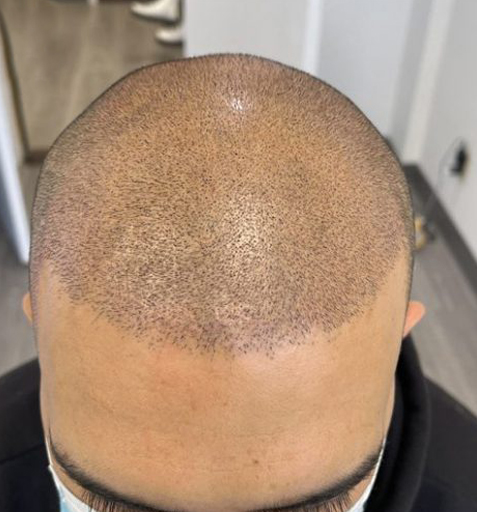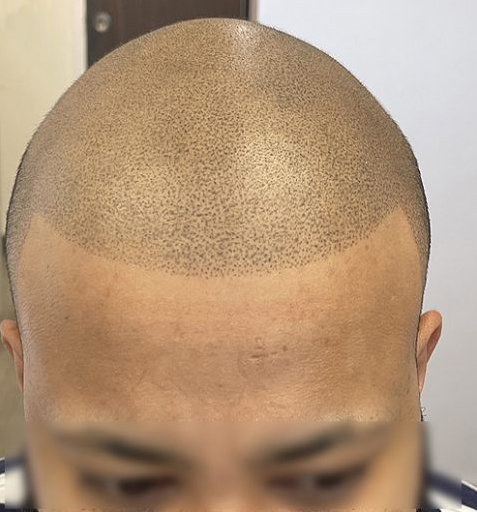
Table of Contents
Struggling with hair loss? You’re definitely not alone. Millions of men experience male pattern baldness, and it can start as early as your 20s. But here’s the good news: you don’t just have to sit back and watch it happen.
You can take control by understanding what’s going on with your hair and knowing where you stand. That’s where the Norwood Scale comes in. It’s a simple tool that helps break down the stages of male pattern baldness, so you can figure out where you are and what you can do about it. Wondering what stage you’re at? Let’s see how this scale can guide your hair journey.
Table of Contents
Male pattern baldness affects a lot of guys, and it can start early—sometimes even in your 20s. You might notice your hairline receding or your crown thinning. If you catch it early, you can do something about it. Why wait until it’s too late? Understanding what causes hair loss and how it progresses helps you take action before it gets worse.
It’s not just about how you look but also hair loss can affect your confidence and self-esteem. But the good news? You can take charge by recognizing the signs and understanding the stages. Want to face hair loss head-on? The Norwood Scale can give you the insight you need.
The Norwood Scale is a simple but effective tool for doctors to measure the stages of male pattern baldness. It tracks your hair loss, from Stage 1, where hair loss is barely noticeable, to Stage 7, where you might have very little hair left on top. It’s easy to use, and both doctors and patients find it reliable. It helps break down hair loss into understandable stages, so you don’t have to guess where you stand.
What makes the Norwood Scale so valuable is how straightforward it is. It takes all the complicated patterns of hair loss and presents them in a way you can easily understand. You don’t need a degree to figure it out—just look at the stages and you’ll know exactly where you are. Curious where you fall on the scale? The Norwood Scale can give you a pretty accurate idea.
Originally conceptualized by Dr. James Hamilton and revised by Dr. O’Tar Norwood, the Hamilton-Norwood scale is a reference point for doctors and hair loss specialists. It allows for a unified way to discuss and measure the extent of hair loss. This classification scale helps not just the practitioners but also the clients who are seeking effective treatments. Providing accurate information paves the way for a fruitful consultation between the person experiencing hair loss and the practitioner.
The Norwood Scale divides hair loss into seven major features or levels. Each level depicts a specific type of baldness and guides doctors and patients in deciding the best treatment options.
Stage 1: No Significant Hair Loss and Adult Hairline
At this stage, hair loss is minimal. You might notice some slight thinning around the temples, but it’s not really noticeable. Most guys don’t even see it happening at this point.
Stage 2: Temporal Recession
This is often where most people first notice hair loss, especially around the temples. Some men might take this as a maturation of their “adult hairline,” but it could be the early stage of male pattern baldness.
Stage 3: The Earliest Stage of Significant Hair Loss
Hair loss becomes more noticeable. You’ll see a clear recession of the hairline, and a bald spot might begin forming at the crown.
Stage 4: Further Hair Loss and Sparse Hair on Vertex
The recession of the hairline continues, and the thinning at the crown gets more obvious. At this stage, it’s time to think seriously about your options.
Stage 5: M-Shape Pattern and Crown Area
The bald spot at the crown gets bigger, and the hairline continues to move back. Hair loss is significantly advanced at this stage.
Stage 6: Connecting the Bald Areas
Severe hair loss. The hairline has receded almost completely, and the crown is almost bald. This is when you may start feeling a little discouraged, but don’t lose hope—there are still treatments available.
Stage 7: Most Severe Stage with Limited Options
This is the final stage. There’s almost no hair left on top, and only a small band of hair remains on the sides and back. While this may feel like the end, there are still options for restoring hair, such as scalp micropigmentation, and you can also embrace a different style.
Male pattern hair loss, scientifically known as androgenetic alopecia, tends to follow certain patterns over the years. It can start as early as one’s late teens to early 20s. Frequently starting at the temples or the crown of the head, the degree and phase of hair loss can differ among individuals.
Unlike men, women usually do not go completely bald. However, they experience significant hair loss, often manifesting as diffuse thinning or widening of the part. Factors such as hormonal changes, age, and medical history can contribute to this condition.
Understanding hair loss is a crucial part of determining the best treatment options. The Norwood Scale, also known as the Norwood Hamilton Scale, is one of the hair loss classification systems experts often employ. While generally aimed at diagnosing male pattern hair loss, it can also offer some insights into female hair loss. This page aims to explain the main differences, how to interpret Norwood Scale results, and how to deal with the reality of losing hair.
The Norwood Scale isn’t just a number—it’s a solution that helps you understand your hair loss and take control. By tracking your progress, you can better plan for treatments and know when to act. It’s not just about where you are right now—it’s about how you’re going to handle the next steps.
Tracking your hair loss gives you a clearer picture of what’s happening and how to manage it. Doctors use the scale to recommend treatments suited for your specific stage. Have you considered how the scale can help you decide what’s best for you?
When you know where you fall on the Norwood Scale, it helps you pick the right treatment. In the early stages, things like minoxidil might be enough. But if you’re further along, medications or even hair transplants might be necessary. The scale is your guide through all of these choices.
Understanding your stage also helps set realistic expectations. Early treatments can slow hair loss, while later options can restore some of what’s been lost. Don’t be afraid to explore your options—the Norwood Scale is here to help you make an informed decision.
Norwood Scale is one of the most widely used, it’s not the only one. Other assessments and tests can give you more insights into your condition. Seeing a hair specialist might provide a more detailed picture of your hair loss. Have you thought about getting a professional’s opinion to confirm your stage? A specialist can offer valuable advice and help guide you toward the right treatment.
Understanding your Norwood stage can be empowering. It’s not just about diagnosing hair loss. It’s about taking control of your situation. The earlier you start, the better chance you have of managing it. You don’t have to let hair loss control your life.
You can make informed decisions and stay proactive by tracking your hair loss with the Norwood Scale. Remember, hair loss doesn’t define you. How you handle it does. So don’t let thinning hair affect your confidence. Schedule a consultation with us today, and let’s help you take the next step toward restoring your hair and renewing your self-esteem. Let’s get started!
What is the Accuracy of the Norwood Scale?
The Norwood Scale is a useful diagnostic tool, it is primarily designed for diagnosing male pattern baldness. Its accuracy may vary when applied to other types of hair loss or women.
What Are the Common Causes of Hair Loss?
Diverse factors can lead to hair loss, encompassing genetics, hormonal irregularities, stress, inadequate nutrition, and specific medical conditions or therapies like chemotherapy.
Are There Different Types of Hair Loss?
Yes, there are multiple types of hair loss, such as androgenetic alopecia (male and female pattern baldness), telogen effluvium (temporary hair loss), and alopecia areata (patchy hair loss), among others.
Is Hair Loss More Prevalent in Men or Women?
Both men and women can experience hair loss, but it often presents differently. Male pattern baldness is more common and generally starts earlier in life, whereas women usually experience diffuse thinning without a receding hairline.
Can Lifestyle Choices Affect Hair Loss?
Your lifestyle decisions, including what you eat, whether you smoke, and how much stress you experience, can impact the pace and extent of hair loss. Eating a well-balanced diet full of vital nutrients can help maintain healthy hair.
Is Hair Loss Hereditary?
Genetics can have a major impact on the probability and the pattern of experiencing hair loss.
How Effective are Over-the-Counter Hair Loss Treatments?
Over-the-counter treatments like minoxidil can be effective for some individuals, but their efficacy varies. Consulting with a healthcare provider for a tailored treatment plan is important.
Can Hair Loss be Reversed?
The reversibility of hair loss depends on its cause and how early it is treated. Some forms, like telogen effluvium, are temporary and reversible, while others, like male and female pattern baldness, are generally irreversible but can be managed effectively with appropriate treatment.






© 2024 HAIRTATTOO.CA | Scalp Micropigmentation & Trichology Centre
